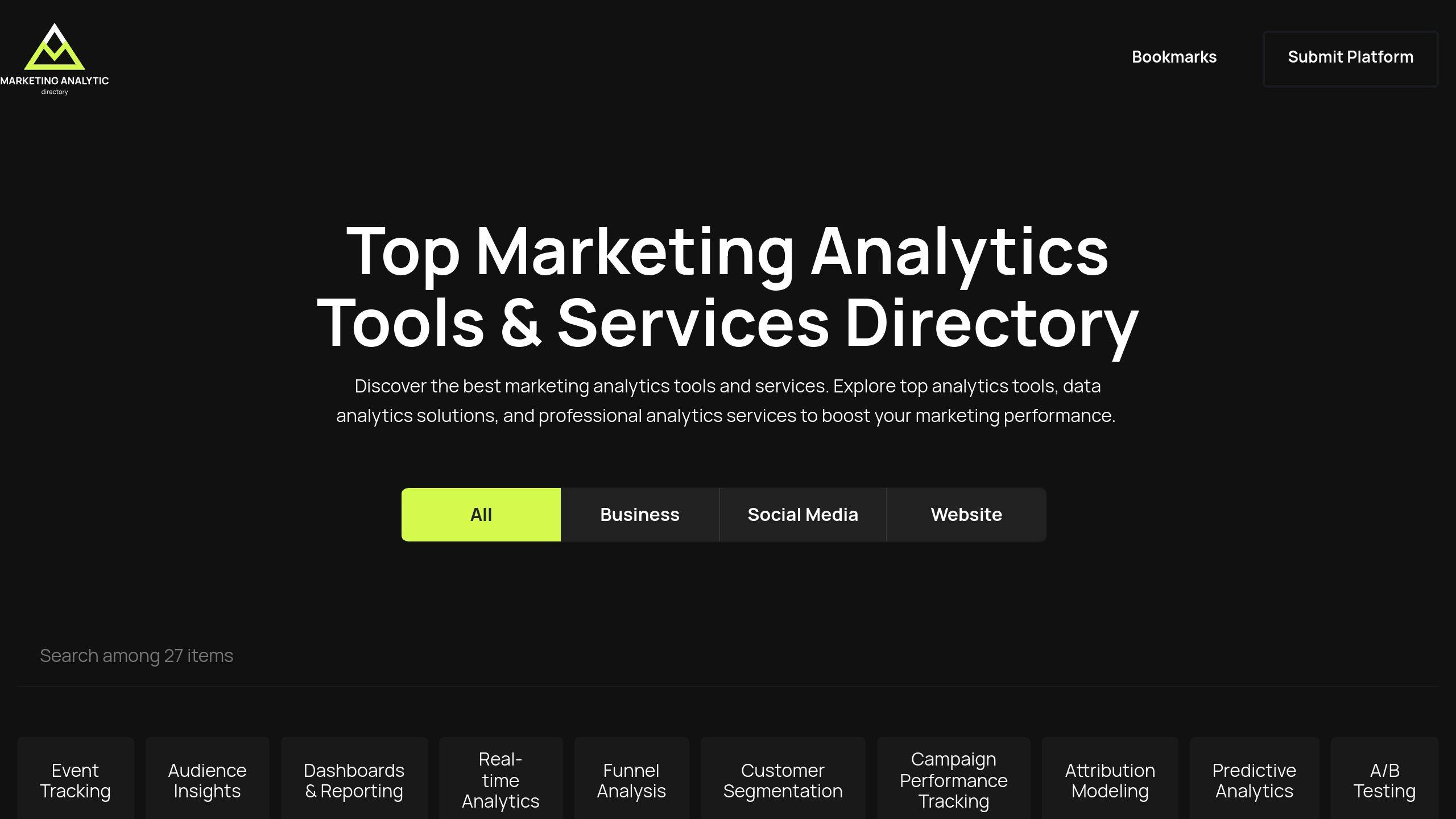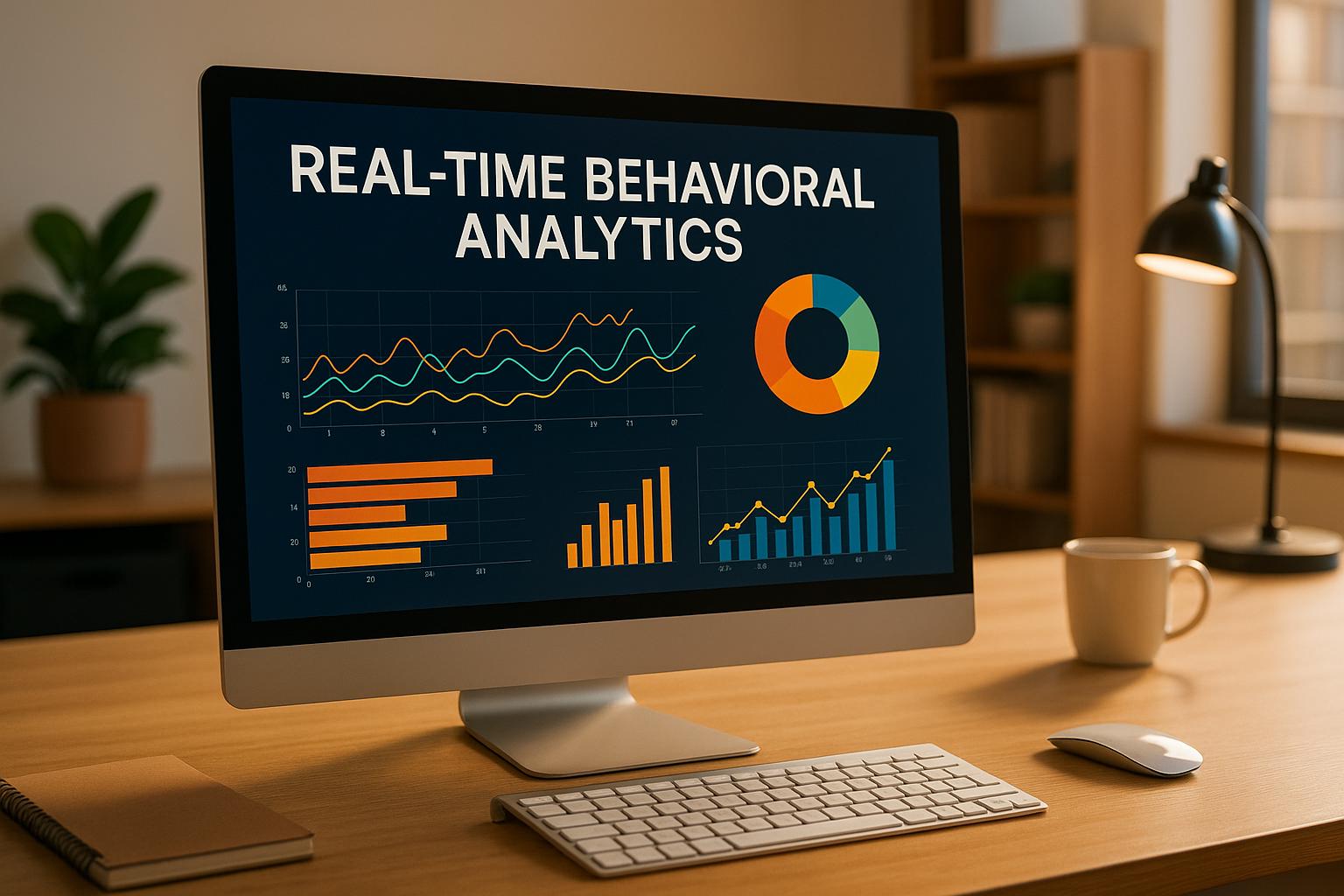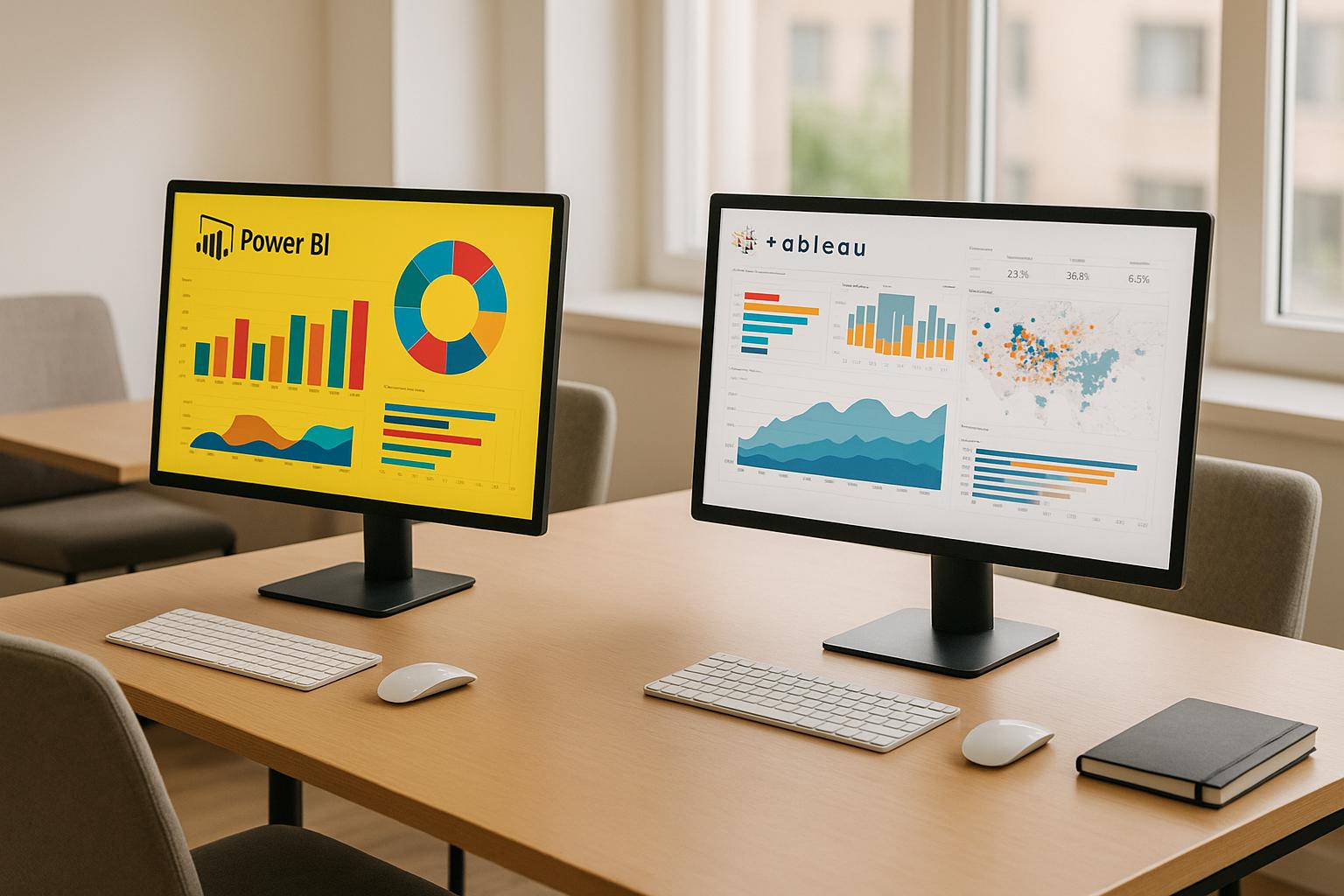Predictive analytics transforms marketing by forecasting campaign outcomes using historical data, statistical models, and machine learning. It enables smarter decisions, better customer targeting, and reduced risks. Here’s how it helps:
- Allocate resources effectively: Predict ROI, optimize budgets, and avoid unnecessary expenses.
- Enhance customer segmentation: Understand audience behavior for tailored campaigns.
- Improve campaign results: Use data-driven insights to refine strategies and avoid costly errors.
Getting started involves setting clear goals, preparing clean data, testing models, and applying insights to marketing efforts. Tools with features like real-time analytics and advanced modeling make this process easier. Ready to boost your marketing with data? Let’s dive in.
How Predictive Analytics and Generative AI Help You Forecast and Plan Your Future Marketing Success
Steps to Use Predictive Analytics for Campaign Forecasting
Using predictive analytics can help you forecast and improve your campaigns. Here’s a straightforward guide to get started.
1. Set Clear Goals and Questions
Start by defining what you want to achieve. Are you trying to identify high-value customers? Predict campaign ROI? Ask focused questions like, "What drives conversion rates?" or "Which leads are most likely to convert?" [1].
2. Collect and Prepare Data
Gather the right data for your analysis. This might include:
- Customer interactions and transaction records
- Online behavior patterns
- Campaign performance statistics
- Market trends
Make sure your data is clean and consistent to ensure accurate results [2][3].
3. Analyze Data and Create Models
Statistical Analysis: Use methods like regression analysis or decision trees to uncover patterns and relationships in your data [2].
Model Testing: Test your models with historical data to fine-tune their accuracy over time [1].
4. Apply Insights to Marketing
Turn your predictions into actionable steps:
Campaign Adjustments:
- Refine targeting strategies
- Reallocate budgets more effectively
- Schedule campaigns for optimal impact
Ongoing Monitoring: Track how your models and campaigns are performing in real-time. Make adjustments as needed to improve outcomes [2][3].
Different types of models are suited for various forecasting needs. Here’s a comparison:
| Model Type | Best Used For | Key Benefits |
|---|---|---|
| Regression Analysis | Predicting numerical outcomes (e.g., sales) | Highlights trends |
| Decision Trees | Segmenting customers and predicting behavior | Simplifies relationships |
| Clustering Models | Targeting audiences and personalizing experiences | Refines audience focus |
Advantages of Predictive Analytics in Campaign Forecasting
Smarter Resource Allocation and Risk Reduction
Predictive analytics helps marketers focus on campaigns and leads that are most likely to succeed, enabling better use of resources and higher ROI [1][3]. By examining past data and market trends, teams can avoid unnecessary expenses and make informed decisions about when to launch campaigns, how to allocate budgets, and who to target. This approach not only reduces risks but also makes forecasting more accurate.
Enhanced Customer Segmentation
Predictive analytics goes beyond simple demographics, diving into behavior-based customer segments. This allows marketers to deliver more tailored and impactful campaigns [2][3].
By studying customer behavior patterns and predicting future needs, marketers can:
- Build campaigns tailored to anticipated customer actions
- Craft content specifically designed for distinct audience groups
- Strengthen forecasting by understanding audiences on a deeper level
As Snowflake highlights, predictive analytics pulls together data from sources like weather, location, and sentiment to identify trends early, giving marketers a competitive advantage [3].
Boosting Campaign Outcomes with Data
The strength of predictive analytics lies in its ability to process diverse data sources at the same time [2][4]. With accurate, up-to-date information and regularly improved predictive models, marketers can:
- Generate more dependable campaign forecasts
- Lower the chances of costly marketing errors
- Achieve better overall campaign results
This evidence-based strategy ensures marketing decisions are grounded in data, not guesswork, leading to more consistent and successful outcomes [1][3].
sbb-itb-5174ba0
Tools and Resources for Predictive Analytics in Marketing
Marketing Analytics Tools Directory

The Marketing Analytics Tools Directory is a helpful resource for exploring tools with features such as:
- Real-time analytics for quick insights
- Campaign tracking to monitor performance
- Audience insights for better targeting
- Business intelligence solutions for deeper analysis
- Platforms tailored for enterprise-level needs
Choosing Predictive Analytics Tools
When picking predictive analytics tools, focus on features that integrate easily, scale with your needs, and offer advanced modeling options. Use an evaluation framework like the one below to guide your decision:
| Evaluation Criteria | Key Considerations | How It Helps |
|---|---|---|
| Data Integration | API access, compatibility with multiple data sources | Ensures a complete view of marketing efforts |
| Scalability | Cloud infrastructure, strong processing capabilities | Handles large data sets without slowing down |
| Analytics Features | Machine learning, diverse modeling options | Delivers precise predictions from complex data |
| User Interface | Custom dashboards, flexible reporting | Makes insights easier to access and act on |
| Technical Support | Training materials, expert help | Keeps tools running smoothly and models accurate |
Look for tools that offer:
- Real-time processing to adjust campaigns on the fly
- Advanced modeling to meet diverse forecasting needs
- Clear and interactive data visualization for better decisions
Define your goals and ensure your team is well-trained to get the most out of these tools. Understanding how each feature improves forecasting accuracy can lead to more effective campaigns and better results [2][4].
Conclusion and Key Points
Why Predictive Analytics Matters in Marketing
Predictive analytics is changing the way marketing works by helping businesses allocate resources wisely, segment customers more effectively, and forecast outcomes with precision. By leveraging advanced data analysis and machine learning, companies can make smarter decisions that boost campaign results [1][3].
Here are three standout advantages of predictive analytics:
- Smarter resource allocation: Use data to guide budget decisions.
- Deeper customer understanding: Create personalized marketing strategies.
- Lower campaign risks: Rely on accurate forecasting to minimize uncertainty.
Taking the first steps toward using predictive analytics can give your marketing efforts a powerful edge.
Steps to Start Using Predictive Analytics
To make predictive analytics work for your marketing, start with a strong foundation. As Snowflake explains:
"Predictive analytics helps marketers make better decisions today by providing insights into what's likely to happen in the future" [3].
Here’s how to get started:
- Set clear goals: Define measurable objectives for your analytics efforts.
- Organize your data: Ensure your data is high-quality and well-structured.
- Pick the right tools: Select tools that align with your marketing goals, such as those listed in the Marketing Analytics Tools Directory.
- Train your team: Equip your team to use the tools effectively and interpret the insights they provide.
FAQs
How do you forecast campaign performance?
Predictive analytics can help you forecast campaign performance by following these four steps:
1. Set Clear Goals
- Define measurable objectives like increasing conversion rates or hitting revenue targets.
- Focus on metrics that directly impact your business goals.
2. Collect Relevant Data
- Use historical data, such as customer transactions and interaction records.
- Analyze online behaviors, demographic details, and contextual factors like location or seasonality.
3. Develop and Test Models
Build and validate predictive models to forecast specific campaign metrics, such as customer engagement or conversion rates. Here’s a quick breakdown of common models:
| Model Type | Purpose | Key Benefit |
|---|---|---|
| Regression Analysis | Forecast revenue | Reveals relationships between data |
| Decision Trees | Segment customers | Simple to interpret and explain |
4. Refine and Optimize
Continuously test and tweak your models to improve accuracy. This ongoing process ensures your forecasts stay reliable and actionable.
"Predictive analytics helps marketers make better decisions today by providing insights into what's likely to happen in the future" [3].
To get started, check out tools that simplify campaign forecasting. The Marketing Analytics Tools Directory (https://topanalyticstools.com) is a great place to explore solutions tailored to your needs.


